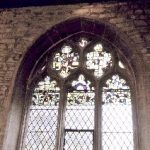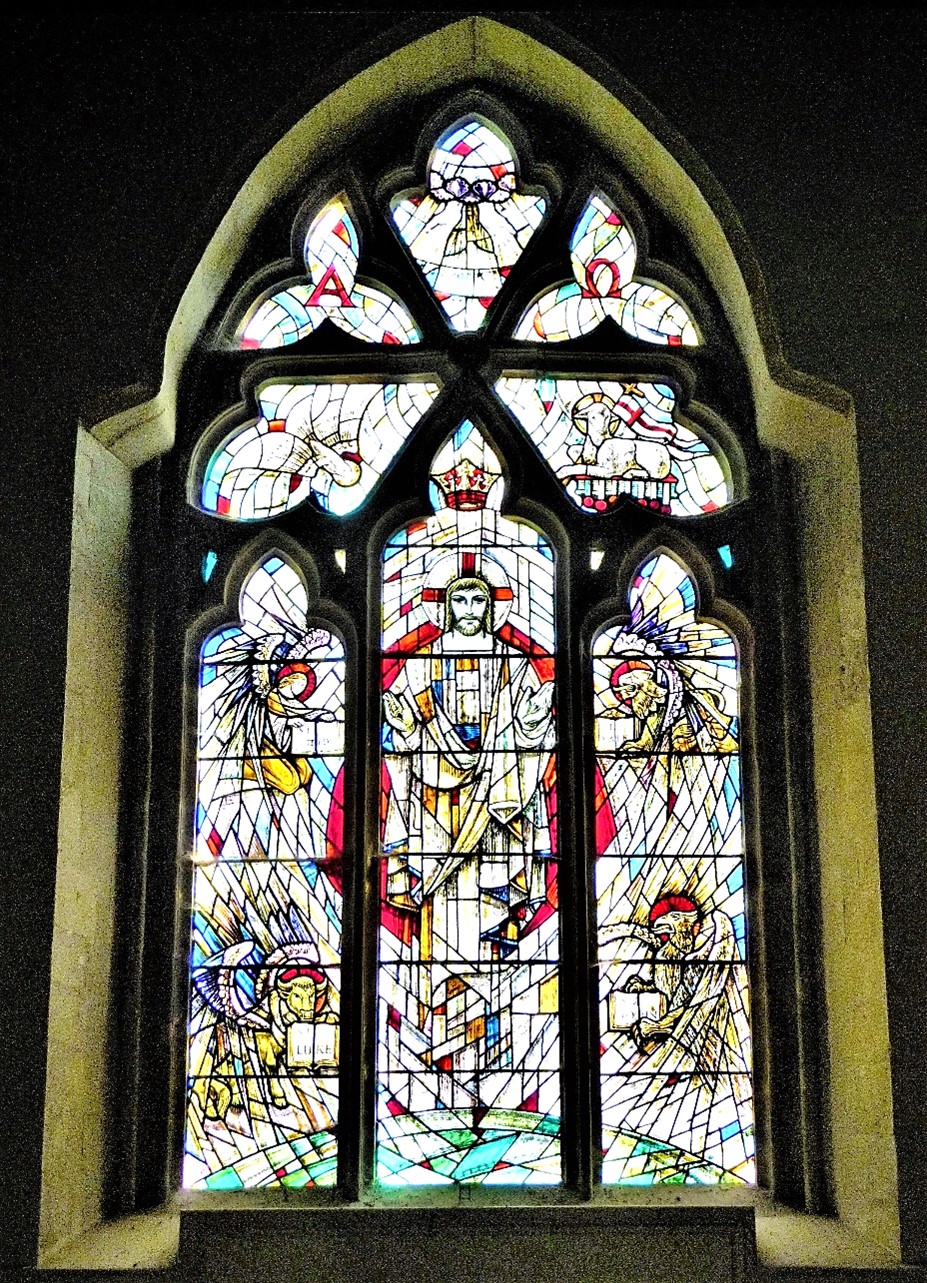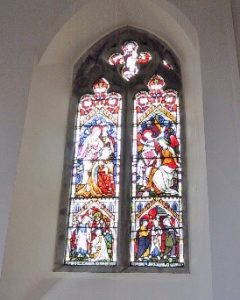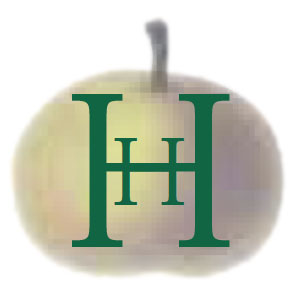Early in the 14th century the original windows in the south of the nave were replaced by two in geometric decorated style. The north and south walls of the chancel contain a series of windows where the decorated tracery develops through geometric, to the flowing curvilinear of the large east window. In the north windows of the nave, the new reticulated tracery of the perpendicular or rectilinear style can be seen.
Medieval parish churches were wonderfully colourful places and Hartpury would have been no exception. The large new windows would have been filled with stained glass, probably telling the bible story from the Creation to the Last Judgement, because windows by then had come to replace wall paintings as a teaching medium. With the reformation all was to change – superstition was banished and with it went much medieval glass.
While it is not known whether this happened at Hartpury, there are records of the parishioners of the time protesting about the removal of the Rood Loft. The Commonwealth period would have completed the destruction which had begun in King Edward VI’s time, leaving only a few fragments of medieval glass in the window tracery.

In 1930, the incumbent Rev. Robert Perry recorded these in both north windows of the nave and identified sections recognisable as Our Lord on the Cross, a throne, mantle and some rays of light possibly together representing the Trinity, and a halo. In 1970 all this glass was reassembled at the top of the easternmost of the windows, effectively destroying any remaining historical integrity.

The design in the large east window is the work of Roy Coomber of Bristol. A dramatic use of glass which combines traditional symbolism with a vigorous sense of movement around the central figure of Christ. It was installed in 1998.
In contrast, in the south windows of the chancel, the Gothic Revival influence had produced two High Victorian boldly coloured windows with intimately detailed scenes. The southeastern was the work of John Hardman of Birmingham in 1857 and the southwestern of Clayton and Bell of London in 1862. These windows were described by Rev. Perry as being of the worst period!
In the southeast of the nave James Powell and Son of London in 1905 used a more refined palette in their representation of Evangelists Ss. Matthew and Mark – described as ‘modern’ by Rev. Perry.

 They were joined nearly a century later in 2002 by St. Luke and St. John, in another window again by Roy Coomber, effectively combining the 21st century’s desire for light and a reaction against the excessively abstract designs so prevalent towards the end of the previous century.
They were joined nearly a century later in 2002 by St. Luke and St. John, in another window again by Roy Coomber, effectively combining the 21st century’s desire for light and a reaction against the excessively abstract designs so prevalent towards the end of the previous century.
